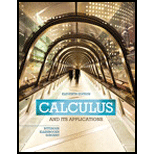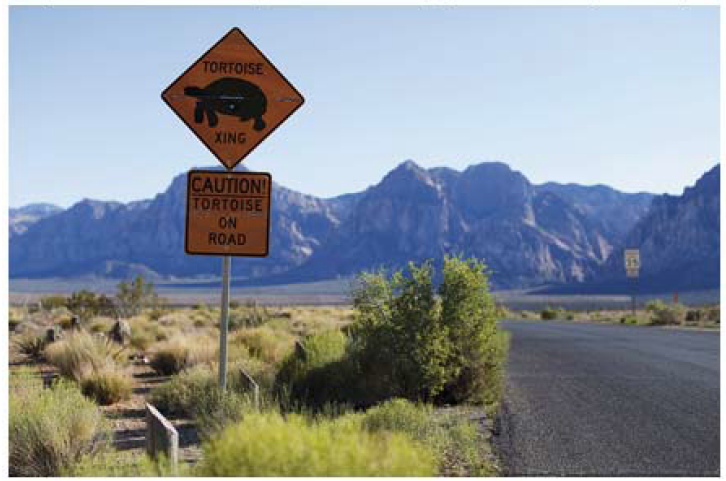
Concept explainers
Limited population growth: tortoise population. The tortoise population,

(Source: www.deserttortoise.org)
a. Find the tortoise population after 0 yr, 5 yr, 15 yr, and 25 yr.
b. Find the rate of change in population,
c. Find the rate of change in the population after 0 yr, 5 yr, 15 yr, and 25 yr.
d. What is the limiting value (see Exercise 42) for the population of tortoises in a square mile of the Mojave Desert?
Want to see the full answer?
Check out a sample textbook solution
Chapter 3 Solutions
Calculus and Its Applications (11th Edition)
Additional Math Textbook Solutions
Single Variable Calculus: Early Transcendentals (2nd Edition) - Standalone book
Calculus & Its Applications (14th Edition)
University Calculus: Early Transcendentals (3rd Edition)
Precalculus: Concepts Through Functions, A Unit Circle Approach to Trigonometry (4th Edition)
Calculus: Early Transcendentals (3rd Edition)
- The population of a culture of bacteria is modeled by the logistic equation P(t)=14,2501+29e0.62t where t is inarrow_forwardEastern Pacific Yellowfin Tuna Studies to fit a logistic model to the Eastern Pacific yellowfin tuna population have yielded N=1481+36e2.61t where t is measured in years and N is measured in thousands of tons of fish. a. What is the r value for the Eastern Pacific yellowfin tuna? b. What is the carrying capacity K for the Eastern Pacific yellowfin tuna? c. What is the optimum yield level? d. Use your calculator to graph N versus t. e. At what time was the population growing the most rapidly?arrow_forwardThe table shows the mid-year populations (in millions) of five countries in 2015 and the projected populations (in millions) for the year 2025. (a) Find the exponential growth or decay model y=aebt or y=aebt for the population of each country by letting t=15 correspond to 2015. Use the model to predict the population of each country in 2035. (b) You can see that the populations of the United States and the United Kingdom are growing at different rates. What constant in the equation y=aebt gives the growth rate? Discuss the relationship between the different growth rates and the magnitude of the constant.arrow_forward
- What is the y -intercept of the logistic growth model y=c1+aerx ? Show the steps for calculation. What does this point tell us about the population?arrow_forwardTo the nearest whole number, what is the initial value of a population modeled by the logistic equation P(t)=1751+6.995e0.68t ? What is the carrying capacity?arrow_forwardBuffalo: Waterton Lakes National Park of Canada, where the Great Plains dramatically meet the Rocky Mountains in Alberta, has a migratory buffalo bison herd that spends falls and winters in the park. The herd is currently managed and so kept small; however, if it were unmanaged and allowed to grow, then the number N of buffalo in the herd could be estimated by the logistic formula N=3151+14e0.23t Here t is the number of years since the beginning of 2002, the first year the herd is unmanaged. a. Make a graph of N versus t covering the next 30 years of the herds existance corresponding to dates up to 2032. b. How many buffalo are in the herd at the beginning of 2002? c. When will the number of buffalo first exceed 300?. d. How many buffalo will there eventually be in the herd? e. When is the graph of N, as a function of t, concave up? When is it concave down? What does this mean in terms of the growth of the buffalo herd?.arrow_forward
- The intensitylevels I of two earthquakes measured ona seismograph can be compared by the formula logI1I2=M1M2 where M is the magnitude given by the Richter Scale. In August 2009, an earthquake of magnitude 6.1 hitHonshu, Japan. In March 2011, that same regionexperienced yet another, more devastating earthquake, this time with a magnitude of 9.0.[23] Haw many timesgreater was the intensity of the 2011 earthquake?Round to the nearest whole number.arrow_forwardDoes a linear, exponential, or logarithmic model best fit the data in Table 2? Find the model.arrow_forward
 Algebra & Trigonometry with Analytic GeometryAlgebraISBN:9781133382119Author:SwokowskiPublisher:Cengage
Algebra & Trigonometry with Analytic GeometryAlgebraISBN:9781133382119Author:SwokowskiPublisher:Cengage Functions and Change: A Modeling Approach to Coll...AlgebraISBN:9781337111348Author:Bruce Crauder, Benny Evans, Alan NoellPublisher:Cengage Learning
Functions and Change: A Modeling Approach to Coll...AlgebraISBN:9781337111348Author:Bruce Crauder, Benny Evans, Alan NoellPublisher:Cengage Learning College Algebra (MindTap Course List)AlgebraISBN:9781305652231Author:R. David Gustafson, Jeff HughesPublisher:Cengage Learning
College Algebra (MindTap Course List)AlgebraISBN:9781305652231Author:R. David Gustafson, Jeff HughesPublisher:Cengage Learning Glencoe Algebra 1, Student Edition, 9780079039897...AlgebraISBN:9780079039897Author:CarterPublisher:McGraw Hill
Glencoe Algebra 1, Student Edition, 9780079039897...AlgebraISBN:9780079039897Author:CarterPublisher:McGraw Hill





